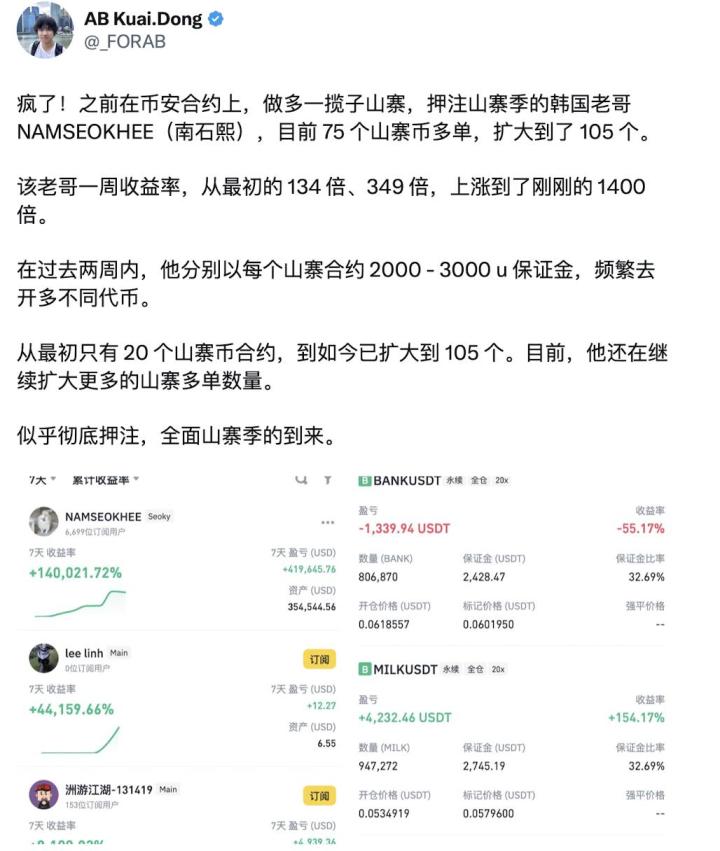Original Author: The Smart Ape
Original Translation: TechFlow
Currently, it is uncertain how long this trend will last, but the Genesis project from @virtuals_io is undoubtedly one of the most profitable options at present.
They seem to have cracked the wealth code, bringing amazing returns (x 100, x 60, etc.), and surprisingly stable.
Here is a detailed gameplay analysis:

A month ago, Virtuals launched "Genesis Launches", which is essentially an AI agent launch platform based on $VIRTUAL.
So far, about 24 AI agent projects have been launched, almost each bringing amazing returns, with gains ranging from x 4 to x 128, averaging x 32.

To be considered a successful launch, a project needs to raise at least 112 K $VIRTUAL (this is the minimum standard). There is no upper limit, and some projects have been oversubscribed by more than 2000%.
Data shows a strong correlation between oversubscription ratio (which is public information) and pre-sale multiples.
Any project oversubscribed by more than 1000% brings huge returns.

From the chart, it is clear that there is an almost linear relationship between subscription ratio and return multiples.
The logic is simple: over 1000% oversubscription means extremely high demand.

Since pre-sale supply is fixed, a high subscription ratio means buyers will ultimately receive fewer tokens.
Many people are dissatisfied with the small allocation and may continue to buy when the project launches, including those who completely missed the pre-sale.
Even if you maximize your quota, increased participation will still dilute your allocation.
For example, in the recent $ARBUS pre-sale, I invested a total of 566 $VIRTUAL, but ultimately only used 18 $VIRTUAL, with the rest being returned.
If fewer people participated, I could have gotten a larger token share.

Drawback: More hype = smaller allocation, even if you have a lot of credits.
Advantage: All tokens are 100% unlocked at launch.
You can sell immediately, but there's a "trap"
If you choose to sell and profit, you will trigger a 7-10 day cooling period during which your credits will be reduced.
The more you earn, the more credits you lose.
This mechanism effectively reduces selling pressure, which is one reason why some projects surge significantly after launch.

Your credits directly impact your ability to profit from Genesis.
More credits = larger allocation = higher potential returns.
About 80 million credits are distributed daily, with multiple ways to earn credits.
The smartest strategy is: accumulate credits and only participate in pre-sales oversubscribed by 1000% +.
This way, your return multiple can reach at least x 40+.
After token launch, choose the right time to sell for huge gains.

Accept credit reduction after selling, patiently wait for the cooling period.
Focus on high-heat projects, avoid frequent cooling, pursue big returns, and use downtime to earn more credits.
Among the 24 launched tokens, only 6 projects had an oversubscription ratio exceeding 1000%, about a quarter, with approximately one appearing every two weeks.
Who doesn't want to earn x 50 or x 100 returns every few weeks?
During the waiting period, accumulate more credits and prepare for the next opportunity.

Of course, this model will not last forever. As more people learn how to use the system, its effect may gradually weaken.
But currently, this approach is still effective and may continue for a few more months.
Just focus on earning credits and target high-demand projects.







